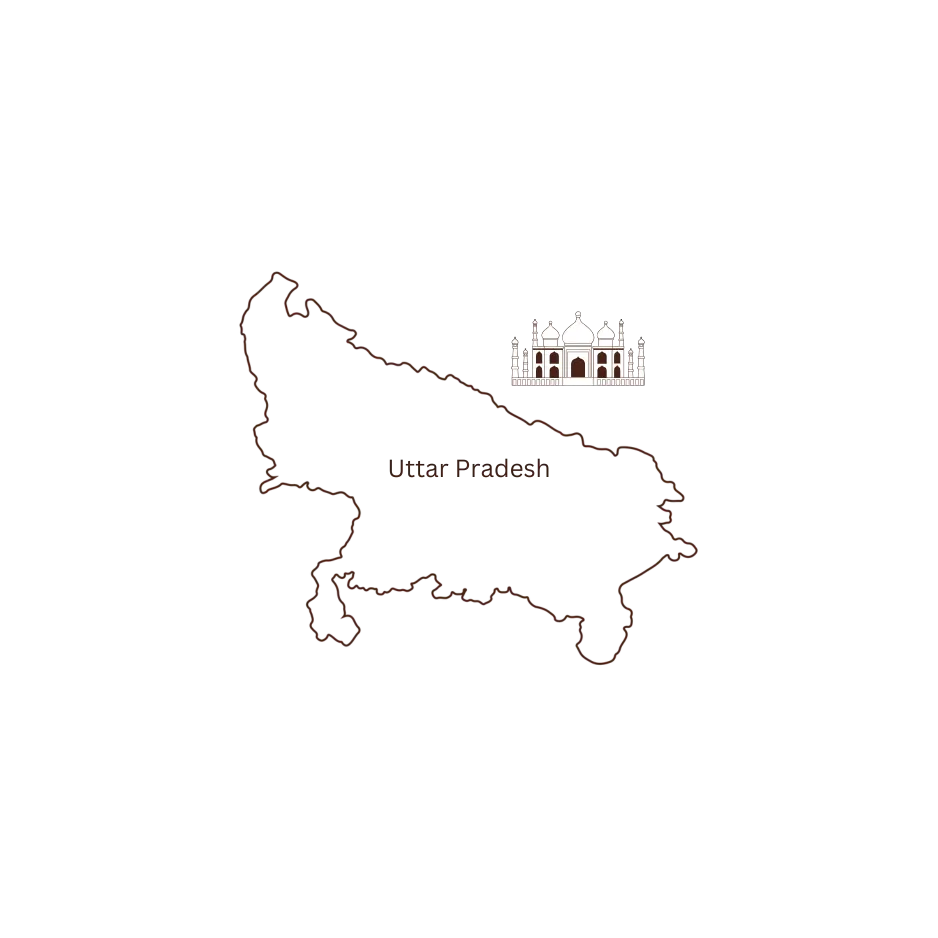
Banarasi Sarees: The Timeless Grandeur of Varanasi

A Heritage Woven in Gold and Silver
Banarasi sarees, the epitome of Indian luxury, trace their origins to the holy city of Varanasi. With roots going back over 2,000 years, these sarees have been coveted by royalty and aristocrats alike. Their intricate brocade work, woven with gold and silver zari, makes them one of the most opulent handloom traditions in the world. Initially influenced by Persian and Mughal designs, Banarasi weaving flourished under the patronage of Mughal emperors, blending Indo-Islamic aesthetics with Indian craftsmanship.
Banarasi sarees are traditionally woven from fine silk, organza, or georgette, and their richness lies in the elaborate patterns painstakingly woven using extra-weft brocade techniques. These sarees are a staple in bridal trousseaus and grand celebrations, representing timeless elegance.

The Artistry: Zari Work, Motifs, and Brocade Weaving
Each Banarasi saree is a labor of love, with motifs and embellishments that exude regal charm:
- Jangla (Floral Jaal Work) – Intricate, dense floral patterns covering the entire saree, symbolizing nature’s abundance.
- Tanchoi Weave – A delicate satin weaving technique that creates self-designs with a luxurious feel.
- Shikargah (Hunting Scenes) – Mughal-era depictions of hunting expeditions, adding a historical narrative to the weave.
- Butidar (Small Floral Bootis) – Signature gold and silver zari motifs set against a silk backdrop.
- Paisley and Mughal Trellis Patterns – Timeless designs reflecting Persian influences merged with Indian heritage.
The weaving process of a Banarasi saree can take anywhere from 15 days to several months, depending on the complexity of the design. Every saree passes through multiple skilled artisans—one weaving the body, another handling the borders, and a third working on the intricate pallu designs.

How to Identify a True Banarasi Saree
To distinguish an authentic Banarasi saree from imitations, look for:
- Heavy, Luxurious Drape: Genuine Banarasi sarees have a rich feel due to the density of pure silk and zari.
- Handwoven Zari Work: Real gold and silver zari threads are slightly raised, while machine-made imitations often appear flat.
- Mughal & Persian-Inspired Motifs: Traditional Banarasi sarees feature floral and architectural designs woven in intricate detail.
Six-Inch Selvage: Authentic Banarasi sarees have a distinct, uncut border along the edge, ensuring originality.

The Beauty of Handloom: A Testament to Artistry
Handwoven sarees are more than fabric; they are an expression of human skill and dedication. Unlike powerloom textiles, which focus on speed and mass production, handloom sarees retain an organic touch—each weave carrying slight variations, a signature of authenticity. The drape, softness, and breathable nature of handwoven fabric make them superior to machine-made alternatives, ensuring comfort and elegance that only improves with time.

Meet the Artist: The Master Weavers of Varanasi
Among the narrow lanes of Varanasi, 45-year-old Noor Mohammad continues his family’s 400-year-old weaving legacy. Trained by his grandfather, he now works alongside his two sons, ensuring that Banarasi weaving thrives despite modern challenges. For Noor, weaving is not just a livelihood—it’s a divine connection to his ancestors and a craft that carries the soul of Varanasi. Each Banarasi saree he weaves is not just fabric but a shimmering canvas of devotion, artistry, and unparalleled grandeur.
